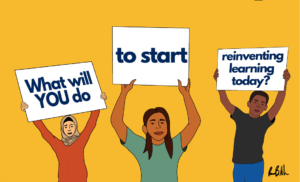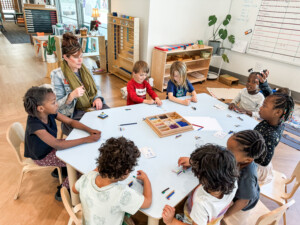Organizational Learning and Collaborative Structures

Much of the dysfunction in schools is a result of the historical isolation of classrooms and schools as compartmentalized hierarchies. This establishes teaching as individualistic rather than as a collegial enterprise. Many problems identified specifically with ineffective teaching practices are attributed to teacher isolation. Isolated classroom cells are symbolic of teachers working out of sight and hearing of one another and solving problems on their own. This professional isolation operates as a bulwark against school improvement and can be a useful priority for many schools and district leaders.
Learning is a social enterprise and people learn best in groups. Collaborative structures help to decrease teacher isolation, codify and share successful teaching practices, increase staff morale, and open the door to experimentation and increased collective efficacy. Collaborative environments are also likely to attract talented staff who thrive on interactions with like-minded talented individuals. High levels of collaboration are likely to exist when the leadership marks it as a priority, when common time and physical space are set aside for collaboration, and when teaching and learning are seen as a team responsibility, rather than an individual responsibility.
Collaborative structures imply the provision of both time and space for teachers to interact. Time is perhaps the most precious resource, and time to meet and talk is an essential resource for schools. Collaboration is time-consuming and staff need to be provided with adequate time to interact. The movement from ‘me’ or ‘I’ to ‘us’ or ‘we’ requires frequent teacher interactions which can be achieved through common planning time, team-teaching, and coaching and mentoring.
Physical structures also need to support collaborative learning. Classrooms, staff workspaces, and furniture all either reinforce or detract from collaboration. Schools should be designed more like advertising agencies than prisons. The provision of comfortable sofas and water fountains can do a great deal to support collaboration.
The most important outcome of teacher collaboration may be that teachers learn how to improve their teaching practice. When teachers collaborate, they share experiences and knowledge that can promote learning for instructional improvement. A team focus on learning helps teachers to discover causal connections between teaching and student learning and encourages collective questioning of ineffective teaching routines. High levels of teacher collaboration are also likely to improve teaching and learning, student behavior, and student achievement on high-stakes tests.
Teachers who work collaboratively think and behave on the basis of an understanding of teaching as a shared responsibility. The scrutiny of peers is welcomed. Collaborative structures enable teachers to learn from the experience and expertise of their peers. However, just because teachers work together does not mean that the outcomes will be positive, as there needs to be an appropriate knowledge base from at least one teacher for it to be worthwhile.
Merely placing staff into teams will not necessarily lead to improved learning. There is the problem of contrived collegiality, where the collaboration is promoted as a means of achieving executive purposes, rather than the goals of the teachers. Communication and interdependence are methods of overcoming the balkanization of the silo-like subject-based teams in high schools. Developing cross-disciplinary curriculum structures is another possible method of overcoming the problem of balkanization.
Organizations learn collectively in groups and collaborative structures enable people to work together in teams to accomplish collective purposes.
For more, see:
- Why You Should Create a Collaborative Classroom This Year
- Defining (and Driving) Collaboration
- Collaboration: Key to Successful Teams and Projects
Stay in-the-know with all things edtech and innovations in learning by signing up to receive our weekly newsletter, Smart Update.








0 Comments
Leave a Comment
Your email address will not be published. All fields are required.